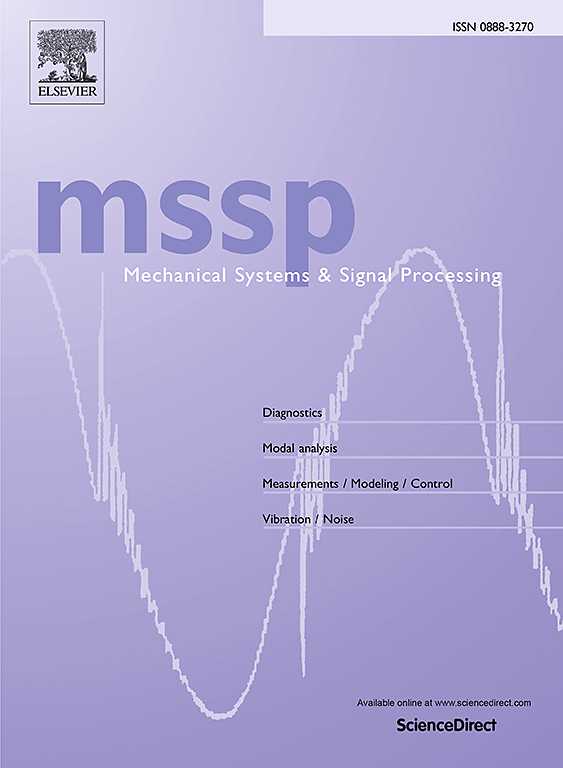Differential time-frequency mode decomposition and its application in rotating machinery fault diagnosis
IF 7.9
1区 工程技术
Q1 ENGINEERING, MECHANICAL
引用次数: 0
Abstract
Mode decomposition methods, such as Empirical Mode Decomposition (EMD), Empirical Wavelet Transform (EWT), Variational Mode Decomposition (VMD), and Singular Value Decomposition (SVD), are widely used in signal denoising. However, these methods essentially act as band-pass filter banks, decomposing signals into different frequency bands. This leads to two key challenges: on the one hand, they cannot remove noise within the frequency band; on the other hand, extracting sensitive components requires precise quantitative criteria, and the design principles of these methods may not apply to all signals. In practical industrial applications, most of the signals collected are from normal operating conditions. To address the aforementioned issues, this paper proposes a novel adaptive mode decomposition method—Differential Time-Frequency Mode Decomposition (DTFMD). This method decomposes signals into sensitive components (SC), reference components (RC), and noise. First, normalized time–frequency amplitude spectra (NTFAS) from easily acquired normal signals in industrial settings are used as reference signals, while the NTFAS from fault signals serve as mixed signals. A large-margin convex optimization model is then applied to identify the optimized weights time–frequency spectrum (OWTFS). Next, an adaptive thresholding strategy is developed to locate the time–frequency positions of the SC, RC, and noise on the OWTFS. Time-frequency inverse transformation techniques are then used to reconstruct the components. Finally, simulations, bearing experiments, and industrial truck gearbox data are used to validate the effectiveness and advantages of the proposed method, with comparisons made against existing mode decomposition techniques.
求助全文
约1分钟内获得全文
求助全文
来源期刊

Mechanical Systems and Signal Processing
工程技术-工程:机械
CiteScore
14.80
自引率
13.10%
发文量
1183
审稿时长
5.4 months
期刊介绍:
Journal Name: Mechanical Systems and Signal Processing (MSSP)
Interdisciplinary Focus:
Mechanical, Aerospace, and Civil Engineering
Purpose:Reporting scientific advancements of the highest quality
Arising from new techniques in sensing, instrumentation, signal processing, modelling, and control of dynamic systems
 求助内容:
求助内容: 应助结果提醒方式:
应助结果提醒方式:


